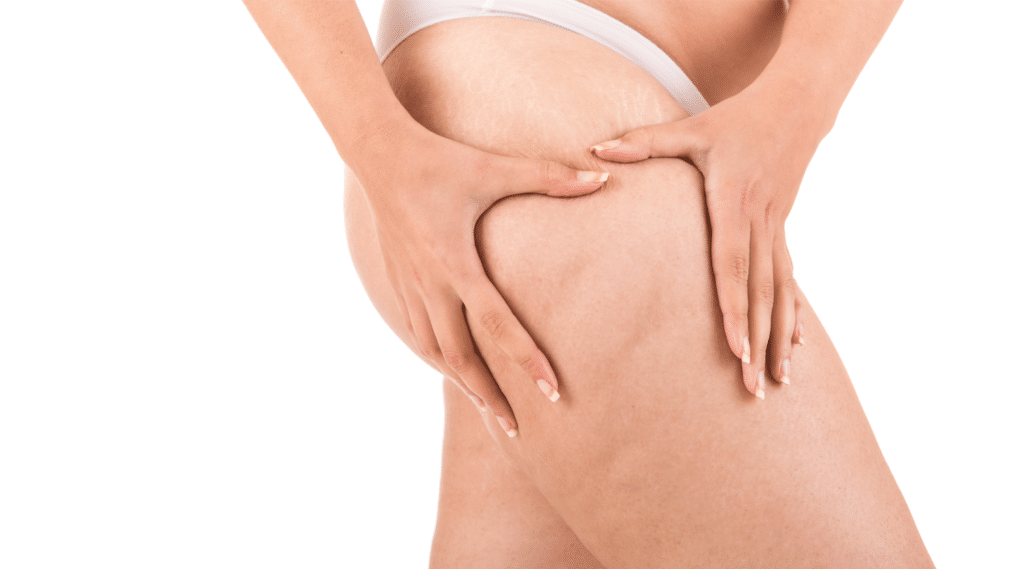Fat transfer breast augmentation offers a dual benefit: enhancing breast size while removing unwanted fat from other body areas. This procedure sidesteps the need for implants, appealing to those seeking a more natural enhancement. Through meticulous technique, surgeons repurpose one’s own fat cells, ensuring results that feel authentic to the touch and appear seamlessly integrated with the body’s contours.
Understanding the Fat Grafting Procedure
Fat Harvesting
The first step in fat transfer breast augmentation is fat harvesting. Surgeons select a donor site on the body where excess fat is available. Common areas include the abdomen, thighs, or flanks. Through liposuction, fat cells are gently removed to minimize damage.
Doctors use specialized tools for this process. They ensure only viable fat cells are collected. This careful selection aids in successful transplantation later on.
Fat Purification
Once harvested, the extracted fat undergoes purification. This step is crucial as it rids the sample of impurities and dead cells that might hinder integration into breast tissue.
Techniques like centrifugation or filtration are often used here. The goal is to isolate healthy, living fat cells that will thrive when transferred.
Injection Techniques
Injecting purified fat into breasts requires precision and skill from surgeons. They employ various techniques to evenly distribute these cells within breast tissues.
Micrografting ensures small amounts of fat are placed at different depths for a natural look and feel. This meticulous approach promotes better blood supply to new grafts which helps survival rates of transplanted fats.
Benefits of Choosing Fat Transfer for Breast Enhancement
Natural Results
Fat transfer breast augmentation offers a natural look and feel. Unlike implants, fat cells from your body blend seamlessly with breast tissues. This process reduces the risk of foreign-body reactions.
Patients often report that their breasts have a soft, natural texture post-procedure. The use of one’s own fat ensures consistency in how the breasts move and feel.
Dual Benefit
This method provides a dual benefit. It combines liposuction with breast enhancement. Extra fat is removed from areas like the belly or thighs.
The harvested fat is then used to increase breast volume. This means you slim down where you want while enhancing your bust area.
Minimal Scarring
Compared to implant surgery, scarring is minimal with fat transfer augmentation. Small incisions are made for liposuction and injecting fat into the breasts.
These tiny marks fade over time, leaving much less noticeable scars than those from traditional breast implants.
Assessing Eligibility for Fat Transfer Breast Augmentation
Donor Fat Availability
To consider fat transfer breast augmentation, sufficient donor fat is crucial. This procedure harvests fat from other body parts. Common areas include the abdomen, thighs, or hips. The harvested fat then enhances the breasts.
Patients must have enough excess fat for a successful transfer. If there’s not enough donor fat, results may be unsatisfactory. Doctors assess this during consultation.
Health Evaluation
Before surgery, evaluating overall health is essential. Patients undergo medical checks to ensure they can safely receive anesthesia and heal properly post-surgery.
A good candidate will have no serious health issues that might complicate surgery or recovery. Smoking status and medications are also considered as they can affect outcomes.
Desired Size & Skin Quality
Lastly, patients should think about their desired cup size and skin quality. Not all cup size increases are possible with this method due to limited available fat.
Skin elasticity matters too because it affects how well the skin adapts to new contours after augmentation. Patients with less elastic skin may experience sagging or irregularities post-procedure. The surgeon evaluates if expectations align with what can be realistically achieved through this technique.
Recovery Experience After Fat Transfer
Downtime Duration
After the procedure, patients generally need some time to recover. The typical downtime spans from a few days to a week before returning to work or normal activities. However, strenuous exercise and heavy lifting should be avoided for up to six weeks.
During this period, it is crucial for individuals to follow their surgeon’s instructions closely. This ensures that the body heals properly and maintains the best possible results from the fat transfer breast augmentation.
Swelling Management
Post-procedure swelling and bruising are common. Most patients will notice these symptoms diminish significantly after three weeks. Complete resolution of swelling may take several months.
To manage these effects:
- Apply cold compresses as recommended by your doctor.
- Keep your upper body elevated when resting.
- Wear compression garments if advised by your surgeon.
It’s important not only for comfort but also for optimal healing that you adhere to these guidelines diligently.
Shape Support
Supporting the shape of your breasts during recovery is vital. Your doctor may suggest specific post-surgical bras or garments designed to stabilize the transferred fat cells and help mold your new breast contour during healing.
Here are ways you can support breast shape:
- Wear surgical support bras as instructed.
- Avoid underwire bras until permitted by your healthcare provider.
- Maintain good posture; it helps with proper shaping as tissues heal.
Anticipated Results and Longevity of Fat Grafting
Realistic Outcomes
After the recovery from a fat transfer breast augmentation, patients often seek to understand what results they can anticipate. It’s important to set realistic expectations for fat retention in the breasts. Not all transferred fat cells survive; some are reabsorbed by the body.
Patients typically observe an increase in breast size with a more natural look than implants provide. However, it’s crucial to note that about 50-70% of injected fat remains viable long-term. The rest is naturally absorbed over time.
Influencing Factors
Several factors play a role in determining how permanent these results will be. One key element is the blood supply within the breast tissue, which nourishes transplanted fat cells aiding their survival.
A healthy lifestyle may also impact longevity; smoking or significant weight fluctuations can affect outcomes negatively. Surgeon expertise and technique are equally vital for maximizing fat cell viability.
Final Effects Timeline
Understanding when to expect final augmentation effects helps manage anticipation post-surgery. Initially, breasts appear fuller due to swelling combined with newly grafted fat.
Over several months, as swelling subsides and some fat gets reabsorbed, true results emerge gradually—typically around three to six months after surgery. Patients should follow up with their surgeon during this period for proper assessment and guidance on maintaining outcomes.
Risks and Safety Concerns in Fat Transfer Procedures
Potential Complications
Fat transfer breast augmentation is generally safe, but it carries some risks. One possible issue is fat necrosis, where transferred fat cells die and cause firm lumps. Another concern is asymmetry, where breasts may not match in size or shape after surgery.
Patients should be aware of these risks:
- Infection
- Scarring
- Loss of breast sensation
To reduce complications, patients must follow their surgeon’s post-op instructions carefully.
Qualified Surgeons
Choosing a qualified surgeon is crucial for minimizing risks. Board-certified plastic surgeons with experience in fat grafting are the safest choice. They understand the intricacies of the procedure and how to handle complications if they arise.
Here are reasons to choose a qualified surgeon:
- Expertise in aesthetic judgment
- Knowledge of advanced techniques
- Ability to manage patient expectations
Patients should research their chosen surgeon’s credentials and ask about their track record with similar procedures.
Post-op Monitoring
After surgery, monitoring for signs of complications is essential. Common symptoms include redness, swelling, pain, or unusual discharge at the incision site. If any of these occur, contacting your healthcare provider promptly can prevent further issues.
Signs to monitor during recovery include:
- Excessive bruising or bleeding.
- Changes in skin temperature or color.
- Unusual pain that does not subside with medication.
Comparing Fat Transfer to Traditional Breast Implants
Procedure Differences
Fat transfer breast augmentation uses body fat from the patient’s own body. It is less invasive than traditional implants. Doctors harvest fat through liposuction, usually from the abdomen or thighs. Then, they purify it and inject it into the breasts.

Traditional implants involve inserting saline or silicone-filled devices. The surgeon makes cuts under the breasts, arms, or around nipples to place these implants.
Longevity Comparison
Fat transfers may not last as long as implants. Body weight changes can affect results over time. Some of the transferred fat may be reabsorbed by the body.
Silicone and saline implants have a longer lifespan in terms of maintaining volume and shape but might need replacement after 10-15 years due to wear or complications like rupture.
Risk Profiles
Each method carries distinct risks. Fat grafting has a risk of oil cysts formation and calcification which could complicate mammograms for breast cancer detection.
Implants pose risks such as implant rupture, capsular contracture (scar tissue that squeezes the implant), and BIA-ALCL (a rare type of lymphoma).
Preparing for Your Consultation and Procedure
Medical Evaluations
Before undergoing fat transfer breast augmentation, patients must complete several medical evaluations. These tests ensure you are in good health and can safely receive anesthesia during the procedure. Common assessments include blood tests to check for any underlying conditions that could complicate surgery.
It’s crucial to discuss your full medical history with your plastic surgeon. They need to know about previous surgeries, medications you’re taking, and any allergies. This conversation helps minimize potential risks associated with the surgical process.
Lifestyle Adjustments
Making lifestyle changes is essential before your procedure. Smokers should quit as smoking can delay healing and increase the risk of complications. Limiting alcohol intake is also advised because it can affect blood clotting.
Patients should maintain a stable weight leading up to surgery since significant weight fluctuations could impact results negatively after injecting fat into the breasts. A balanced diet will help manage swelling post-operation.
Consultation Preparedness
When attending your consultation, bring a list of questions regarding the experience of your plastic surgeon, details about recovery time, and what appearance you can expect post-surgery.
Ask about:
- The number of similar procedures they’ve performed.
- Potential side effects or complications.
- How long until you can return to normal activities.
Understanding these aspects gives patients an idea of what their journey will entail — from initial consultation through recovery.
Final Remarks
Fat transfer breast augmentation represents a significant advancement in cosmetic surgery, offering a more natural alternative to traditional implants. This procedure not only enhances breast size and shape using the patient’s own fat but also promises a dual benefit by contouring areas where fat is harvested. As outlined, eligibility assessment, recovery expectations, anticipated outcomes, risks, and procedure comparisons are critical components of the decision-making process. The longevity and safety of fat grafting underscore its viability as a preferred option for many seeking breast enhancement.
Prospective patients should engage with board-certified plastic surgeons to discuss their unique needs and expectations. It is imperative to make informed choices based on thorough consultations and expert advice. For those considering this transformative journey, take the next step: schedule a consultation to explore how fat transfer breast augmentation can achieve your aesthetic goals.
Frequently Asked Questions
What is fat transfer breast augmentation?
Fat transfer breast augmentation is a procedure that uses liposuction to take fat from other parts of your body and inject it into your breasts.
Who is eligible for fat grafting to the breasts?
Candidates are typically non-smokers, in good health, with sufficient donor fat and realistic expectations about the outcome.
What are the benefits of choosing fat transfer for breast enhancement?
Benefits include no need for implants, natural-looking results, minimal scarring, and improvement in body contour where the donor fat was harvested.
How long does recovery take after a fat transfer procedure?
Recovery varies but generally takes a few days to weeks. Most patients resume normal activities within 2 weeks.
What results can I expect from a fat grafting procedure to my breasts?
Expect subtle enhancement with more natural contours compared to traditional implants; however, some absorbed fat may reduce initial volume gains over time.
Are there risks associated with breast augmentation via fat transfer?
Yes, including cysts formation, infection risk, possibility of calcification which might complicate mammography readings. However serious complications are rare when performed by an experienced surgeon.
How does a consultation for this surgery prepare me for the procedure?
A consultation will assess eligibility and discuss goals. You’ll receive personalized pre-and post-operative instructions based on your health status and lifestyle.








